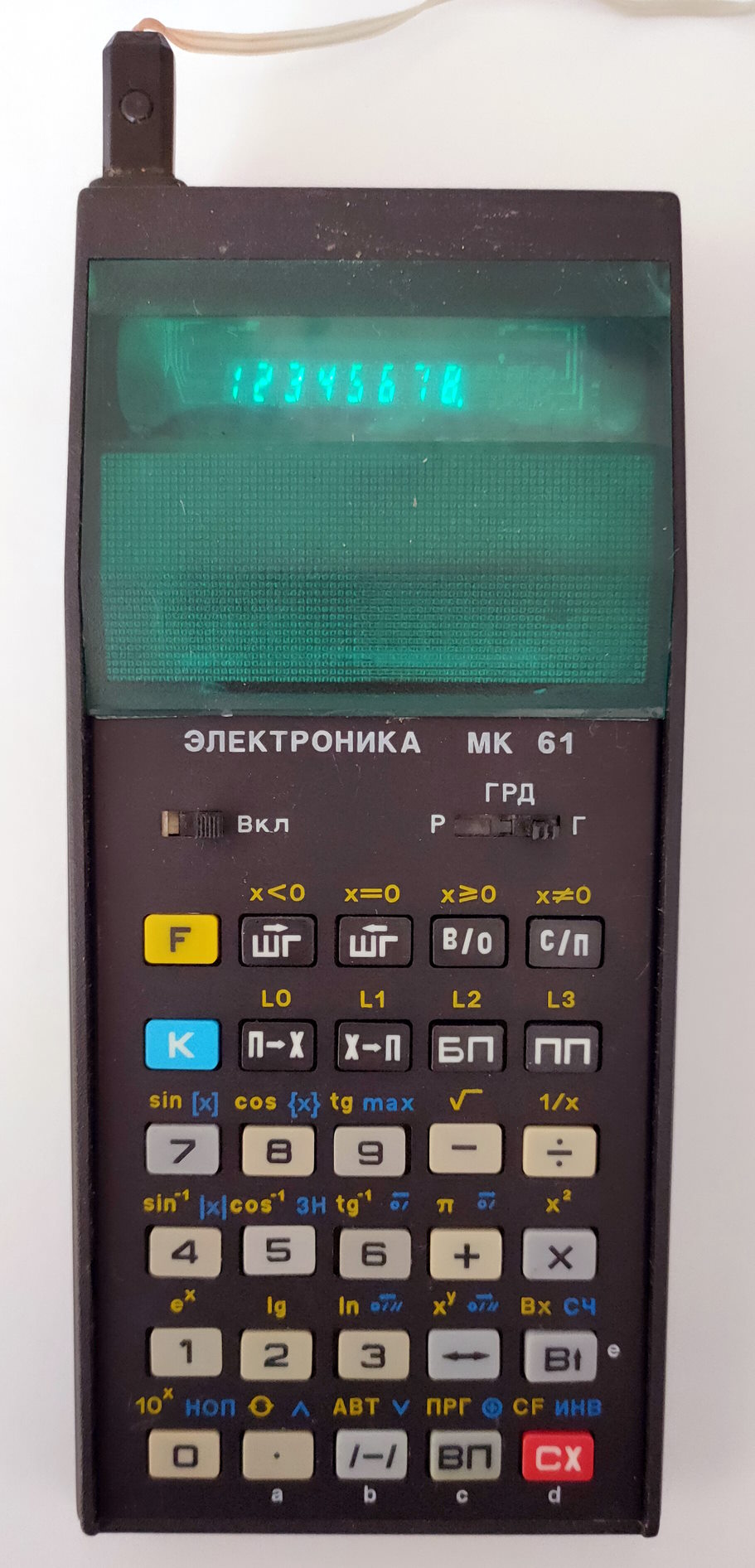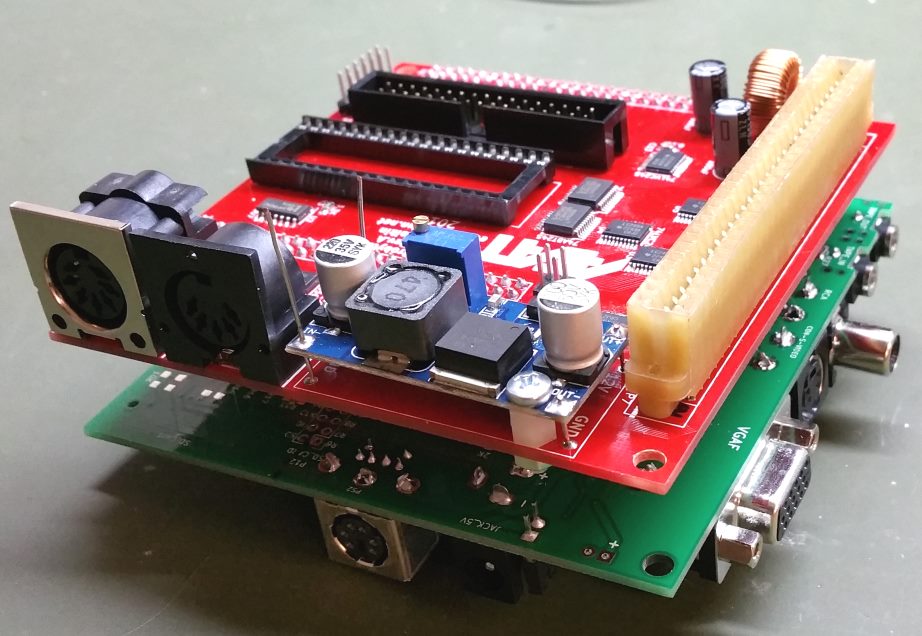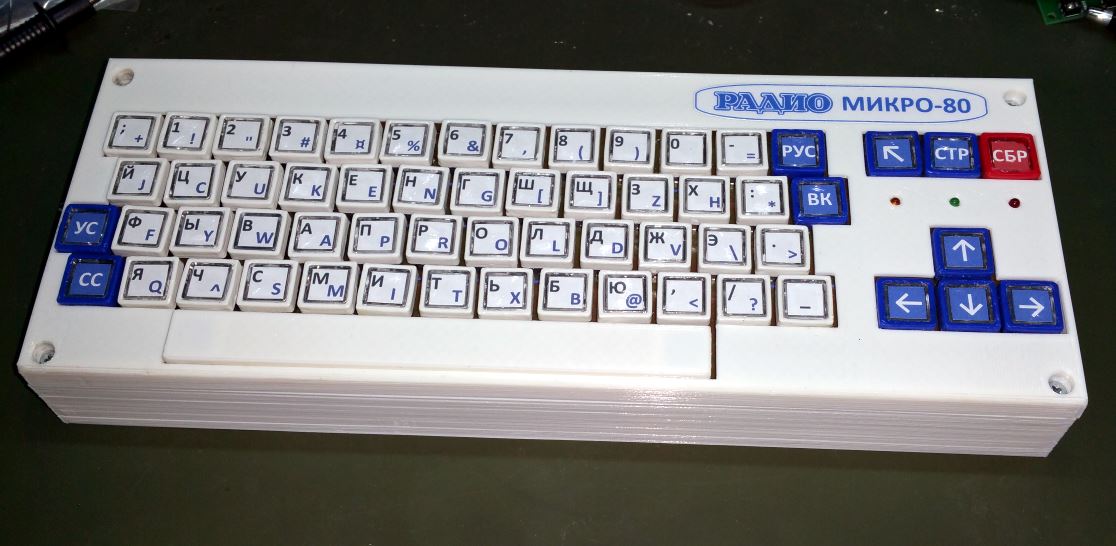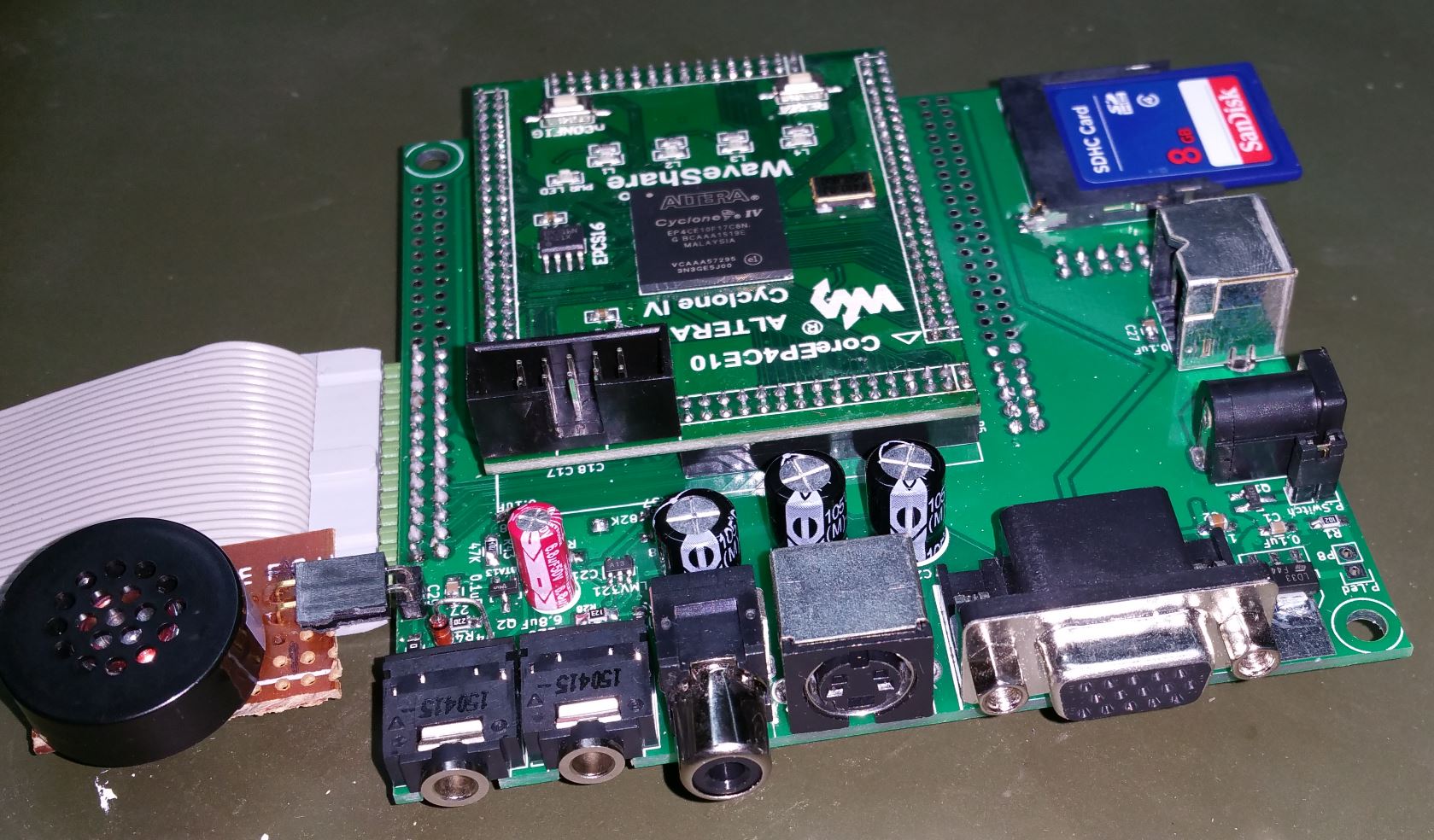Agat-7. Introduction.
After the “UT-88” computer’s trial project, let’s start with a much more serious project. We will design and build another Soviet computer – AGAT-7. In this case, the DE1 board will be used only for prototyping – the computer will be made on its board. So, let’s see what this computer was.
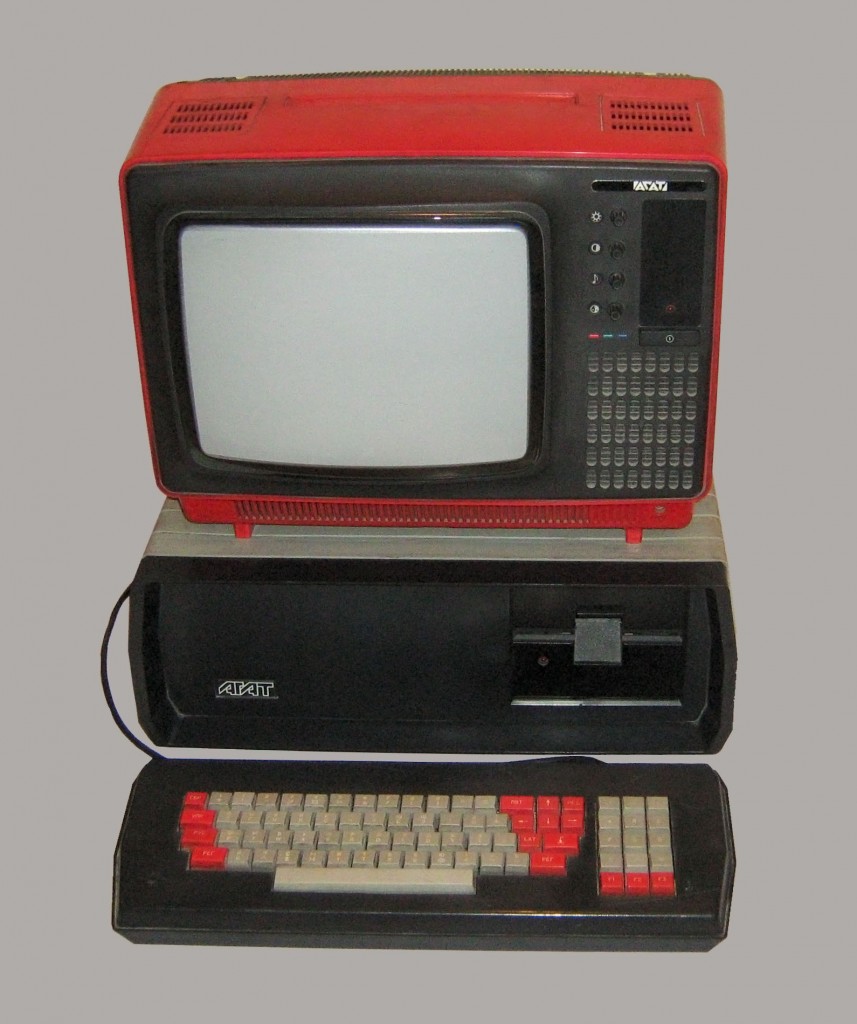
The manufacturing of the Agat-7 computer started in the USSR in 1984. In the basic configuration, it had the following specifications:
- CPU: 8-bit, 6502.
- CPU frequency: 1 MHz.
- Memory: ROM 2 Kbytes (for the system program); RAM 96 Kbytes, but can be expanded with additional cards.
- The system case had computer boards, a power supply unit and one or two floppy drives (140 Kbytes or 840 Kbytes). Its size was — 500×351×195 mm, weight was — 8.7 kg. It required 220 volts power supply and had 60W power consumption.
- External 74-key keyboard. Its size is 480×172×65 mm, weight — 1.1 kg.
- Display: colour with 32 cm diagonal, based on TV sets «Shilyalis» or «Youth-404».
- It supported two text modes (32 х 32 – 16 colours and 64 х 32 – b/w) and three graphic modes (16 colours 64 х 64 pixels and 128 х 128 pixels, and black&white 256 х 256 pixels)
- The following matrix printers could be connected to the computer: D100 (Poland), CTI CPA-80, CPF-H80 (Japan), Epson FX-85, FX-800, LX-800 (Japan), SM6337, MS6313 (USSR).
- Two one-axis game units were included with the computer.
It wasn’t a hobbyist computer. It was costly for home users – 3,900 rubles, which is more than half of a “LADA” car price in the Soviet Union at that time. Usually, it was supplied to schools and organisations where it achieved a lot of fans. As for me, the first time I tried Agat-7 was in the second half of the 80s in a computer club in Moscow. And it was the first computer in my life that I tried.
Agat-7 had a motherboard and extension cards – very similar to modern computers. The motherboard has seven slots numbered from 0 to 6. A CPU module always occupied slot 1 with a 6502 processor and 32K bytes of RAM.
Slot 0 could be used for the so-called “Cell 121” extension board. This board had its own RAM and video adapter with Apple-][+ graphic modes and allowed to launch programs and games from this computer on Agat-7
32 Kbytes ROM emulation module usually was installed in slot 2, and an extended 32 Kbytes RAM module – in slot 4. So, all together with the CPU module, they made 96K bytes of memory. These two boards were the same – the only difference was the jumpers set up on them. ROM emulation mode allowed us to use it as write-protected memory. Also, it could replace the computer setup program from ROM. It added quite a lot of flexibility to Agat-7.
140K floppy-drive controller normally occupied slot 3, while 840K floppy-drive – slot 5.
Slot 6 could be used for other extension boards. For instance, a serial-parallel interface board could allow the computer to communicate with other devices such as another computer, printer or even a mouse!
Also, Agat-7 had a speaker and a tape in/out port, which rarely had been used.
A Bulgarian clone of the 6502 processor (CM630) was most often used in Agat-7.
But interestingly, there was an early version of the computer with a CPU module made only on discrete components, which were simulated 6502 CPU! This “CPU” was 30% slower than 6502 but had some additional instructions. It was done because of a shortage of 6502 compatible processors in the USSR.
Opposite to “UT-88”, there were a lot of programs for Agat-7. Also, some Apple-][ programs were adapted. I’m sure that there are a lot of people who would like to try this computer now. If enough interest in the project is expressed, a kit for DIY will be created.
Some more information about this computer you can find in Wikipedia.
In the next post, we will discuss the concept of the computer, what it will include and what solutions will be used. See you!
